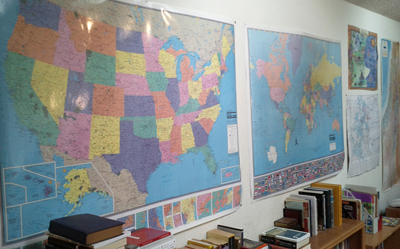No, homes don't learn, but creating what I call a "learning home" can help you and your children appreciate and make the most of your homeschooling journey.
A learning home cultivates an environment that encourages and stimulates education, intellectual curiosity, and wonder about the world. Here are some tips for helping you create a learning home.
Always let your children ask questions. Kids are expected to inquire about all kinds of things and, as parents, we can help guide the resulting discussions. Even if we don't have the answers all the time (and we won't!), we can learn with our children as they inquire. If we are interested in learning, and demonstrate to our kids that we are, we can help pass on our love for learning to them.
Roman thinker Cicero said, "A room without books is like a body without a soul." Books are a key component of any learning home. But books in a learning home need not be confined to just one area or room. Spread books throughout your house and you'll often find that your children will become more interested in grabbing a book off a shelf even "after school."
A learning home also tends to have lots of stuff on the walls. No, I don't mean peanut butter and jelly stains, though that can happen! I'm referring to items such as maps, timelines, and posters. In my house we have a wall of maps that includes a map of the world, the United States, Colorado, Israel, and Narnia (as a C.S. Lewis fan I had to include this one!). Knowing geography helps cultivate cultural literacy, understanding about how to read maps, and can bring history to life as children begin to grasp where historical events actually took place.
Extending the learning home concept to your backyard is helpful, too. If you don't have a backyard you can apply these ideas by going to a park or any place you can think of where your kids can observe and explore nature. If you do have a backyard, you and your children will be amazed by how much of interest you might find in it. From ant colonies to types of trees to various birds to spider webs, your own backyard can serve as a helpful annex to your learning home, especially when it comes to science studies.
A home computer connected to the internet offers a number of opportunities to follow up on questions and discussions that come up in a learning home. YouTube, for instance, provides a variety of videos on all sorts of educational topics. Are your kids interested in bugs? Chances are that YouTube will have some fascinating videos on the topic. The fine arts? Go online and learn about great artists, paintings, composers, sculptures, architecture, etc. (Try to locate your computer in an open area where everyone can see what's going on. This is an internet safety tip, but it will also encourage your children to take an interest in learning activities that you are exploring online together.)
Keep in mind that a learning home is not a museum. It's expected that things will get messy sometimes. Books will get left in various places, piles of knowledge may form here and there, dirt will get tracked in and out of the house, and, yes, every now and then peanut butter and jelly will end up on the walls. What is far more important is that a learning home will help your children become lifelong learners who are intellectually curious about everything God's world has to offer.
Do you have any learning home tips? We'd love to hear them!






[...] does the Charlotte Mason method tie in to a Sonlight-based education? I've already written about a learning home, which coincides well with Mason's emphasis on the atmosphere in the home contributing to education [...]